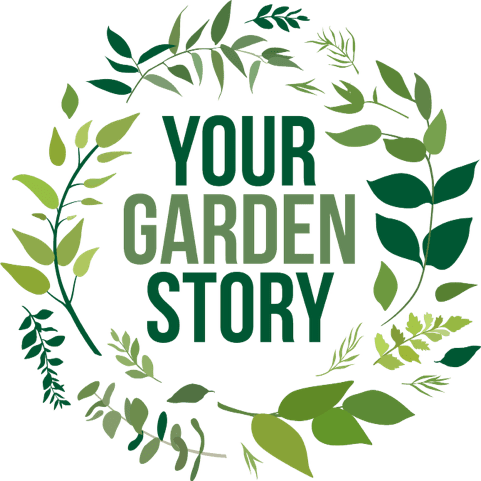One of the many reasons I love gardening is sharing experiences, good and bad, with friends. During Covid, I began to get to know who my “gardening friends” were. As the months ticked by, we shared stories of new vegetable beds being created, myriads of seeds purchased, tools sharpened, perennials ordered, and gardening magic began. Discovering this shared passion has resulted in a whole new level of friendship and camaraderie. Books have been shared, vegetables exchanged and endless text messages and photos of garden successes (and failures) circulated. Amongst other things, the sharing of garden experiences means sharing hope and possibility and inspiration. This month some of my gardening friends and family kindly agreed to share their garden stories, in their own words and pictures. I hope you enjoy them and are inspired by them as much as I am.
John Cogan – Litchfield County, USA
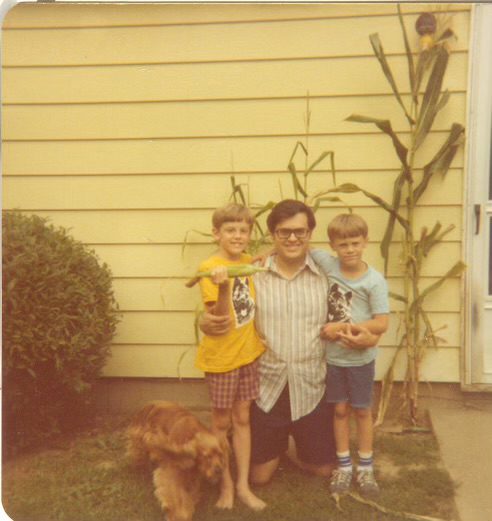
This is me at 3 years old, sitting in a pumpkin patch at a relative’s house. Clearly, I was destined for a life of vegetable gardening. At around the same time, I reportedly enjoyed watering my grandmother Doris’ flowers. But I referred to it as “Wada the Fow Does.” Doris got a laugh telling that story for decades to come.
After this early interest in crop cultivation I went into a bit of hibernation with school, work and apartment living not designed for gardening. My wife Kennedy and I began spending weekends in Litchfield Co Connecticut in May 2007. The previous owner of the house had a small garden with a primitive and ineffective deer fence. I bought seeds and planted crops immediately and have been doing so in that same plot of earth for 18 consecutive springs. I have had many friends over the years take up gardening for a year or two and give it up. It takes commitment and hours to get a good garden. I find the hobby enormously rewarding on a variety of levels
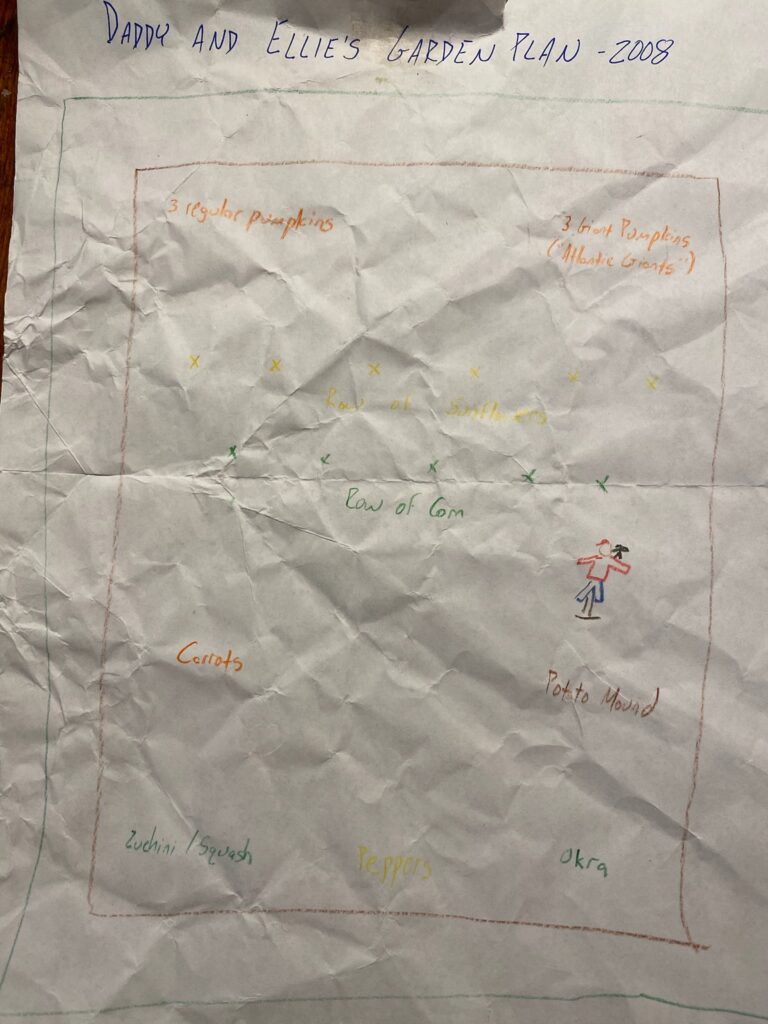
Linear Improvement?
I draw out a garden plan each year on a piece of 8.5 x 11. By the end of the season the plan is a creased muddied mess from many rainy trips to the field to replant crops. Here is a picture of my first planned garden in 2008. Rather primitive! And note to gardeners – okra doesn’t work in zone 6A.
Here is a picture of the 2024 garden plan.
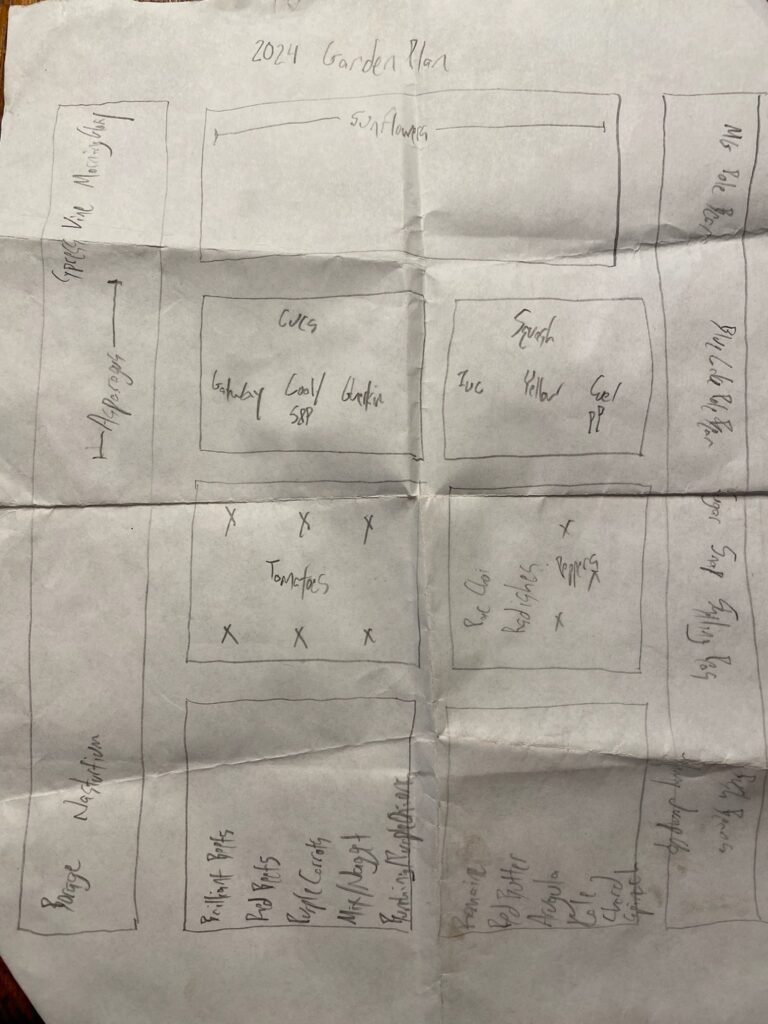
A pretty dramatic improvement in variety and yield. I enjoy the steady improvement in gardening skill. If you put in the work and learn how to deal with the vagaries of weather you will notice a steady improvement. This comes from a lot of trial and error, and most importantly, numerous conversations with friends and family on what works and what doesn’t. Gardening provides a thrill of 2 steps forward, 1 step back.
Garden Leave
I work in finance. When you switch firms the banks require that you sit out 3 months before starting at the new firm. This became known as gardening leave. I think it originated in the UK when London bankers would head to their rural retreats while on a forced break from work. More recently the garden leave in the US is known as “being on the beach.” He or she is “on the beach for 3 months.” I served garden leave in 2014 and actually pursued a great deal of gardening.
Here is the 2014 garden in August.
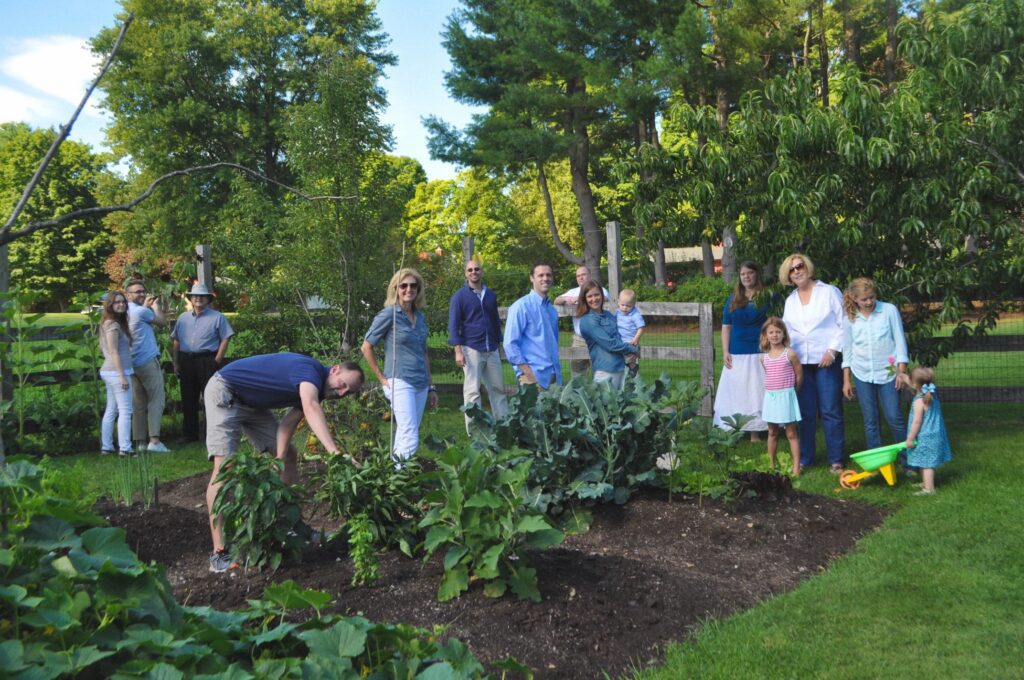
My family were visiting from Ohio. That was a great garden! For the first and only time I entered vegetables in a local county fair. Took home 4 blue ribbons and a cash prize of a princely 12 bucks.
Family and Friends
The gardener faces uncertain weather, a variety of bugs and fungus, an early frost, a late frost, or the horrors of a rampaging deer. The good gardener figures out how to deal with (or at least manage) these variable elements. And to really get the most out of the hobby, you need to be in constant communication with family and friends. What new are they growing this year? When do you plant your beets? Should the beetle trap be up or down wind? What is eating my leaves?
My mother and sister took up gardening at about the same time that I did. Our text string stretches a mile as we communicate on our gardens. Gardening has proved to be a bit of connective tissue between the three of us. I can’t think of another hobby (really passion) that would create this sort of bonding. 1+1+1=5 in gardening.
The Changing of the Seasons
Having lived in New York for many years before I started gardening it was easy to ignore the passing of the seasons. Gardening forces an understanding and appreciation for the changing of spring summer and fall. The pace of the gardening is dictated by nature. I have noticed that I can start crops a week or so earlier than 2007/8 with the warming climate. I read that more crops can handle Connecticut weather. But for now I stick to my regiment of planting as follows:
For many years I have started my garden 2 weeks before Memorial Day:
Lettuces
Radishes
Bok choy (grows surprisingly well in cold soil)
Peas
Beets
Carrots
Onions
The next week I go with crops that can germinate in 58 degree soil:
Beans
Sunflowers
Tomatoes
Then Memorial Day finish with crops that like warm soil:
Cucumbers
Squash
Bush beans
Peppers
Any variance from this schedule risks a mess in my experience.
Try Something New
I have tested the limits on what can grow in zone 6A. Brussel sprouts? Wasting your time. I still try to find something new that can accommodate the short growing season in Connecticut. Here is a picture of my garden this year.
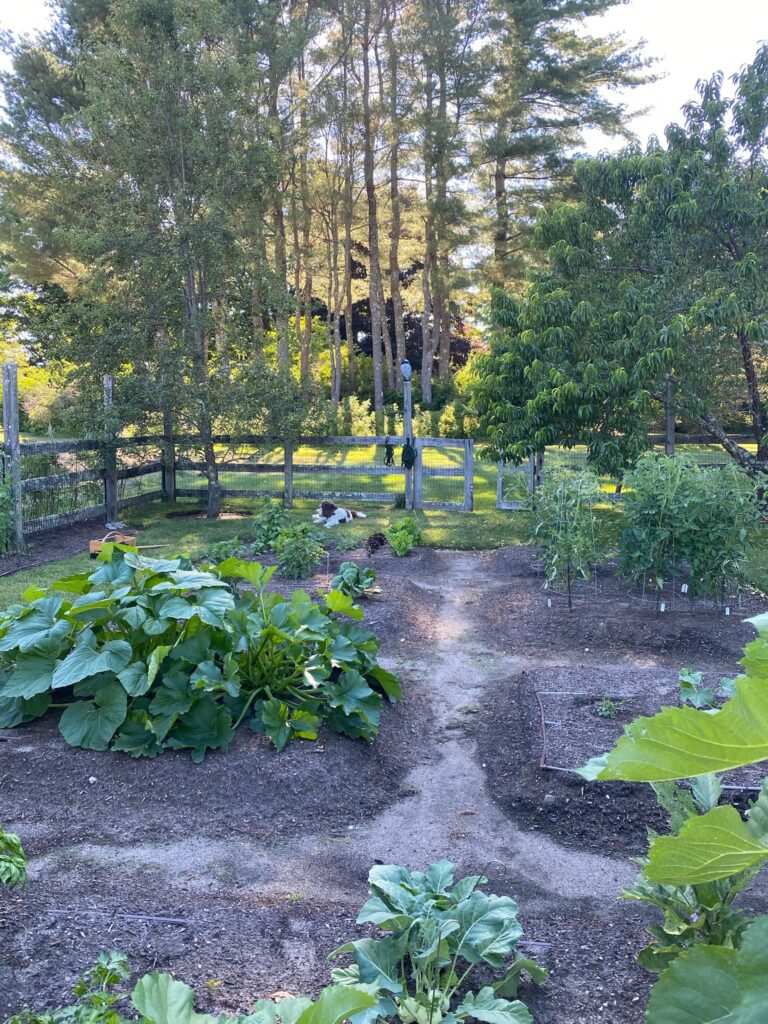
In the lower center, you can see a row of kohlrabi (a German turnip). They love it here. Still trying to figure out how to cook them. So far I chop the leaves and the bulb and sauté them in olive oil. Very tasty.
Melissa Guion – Upstate New York, USA
Ten years ago, my husband and I bought a country retreat a few hours from New York City: a well-maintained farmhouse surrounded by acres of neglected grounds, including beds filled with peonies, lilies, primroses, and other forgotten treasures.
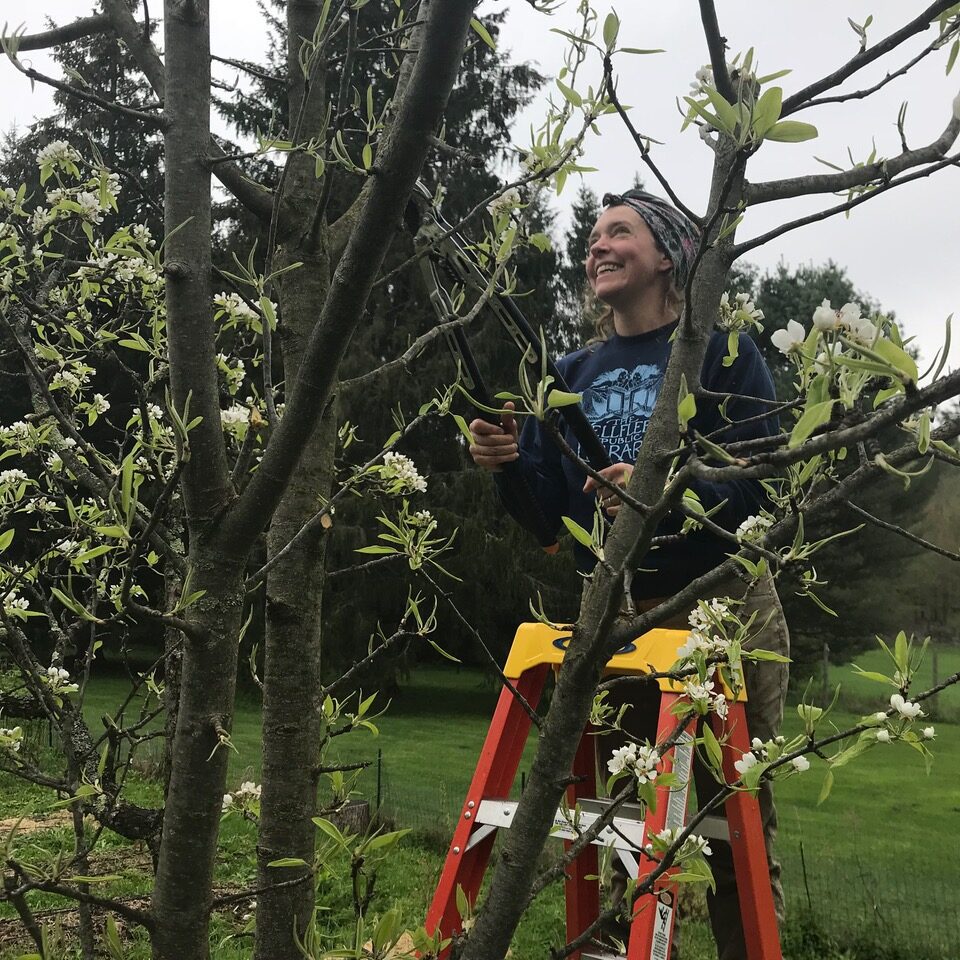
Fellow blog readers, haven’t we all aspired to revive a garden hidden amidst a copse, à la The Secret Garden? I was thrilled at the idea.
But as I worked, slowly taking in my surroundings — buzzing insects and feeding birds, rabbits and foxes — it dawned on me that restoring the property would involve more than selecting perennials and digging weeds. There was a web of life all around that would be affected by the choices I made. I needed to get to know the local plant and animal community, and make decisions with their needs in mind.
Taking the advice of some beloved books and podcasts, I began by learning to identify and remove invasive plants. In our area, the most aggressive herbaceous ones are mugwort and garlic mustard. Many woody invasives, like barberry, Russian olive, and multiflora rose, were planted intentionally in times past, and I tried to remember their lesson as I bought: not how does this plant look, but how will it behave in my garden?
Under the shade of an enormous maple, I planted twinleaf, Jeffersonia diphylla, and rues. I bought wild local ramps at the farmers market and ate just the tops, planting the rhizomes in a likely spot. I replaced thickets of Japanese honeysuckle with shrubs of spicebush, swamp dogwood, buttonbush and ninebark.
It’s rewarding to see how the landscape has responded to these changes. I still enjoy many showy non-native specimens that surround our house, but in the background, insect and bird populations are thriving. Most happily, fresh natives have “volunteered” in openings I created. It’s delightful to spot a baby sumac and native holly, Ilex verticillata, emerging where there were none before. Several new native dogwood species — in addition to those I planted — are creating a thicket along our fence line. Black and red elderberry are proliferating, and just a few weeks ago, I spied a native hydrangea that has popped up seemingly out of nowhere.
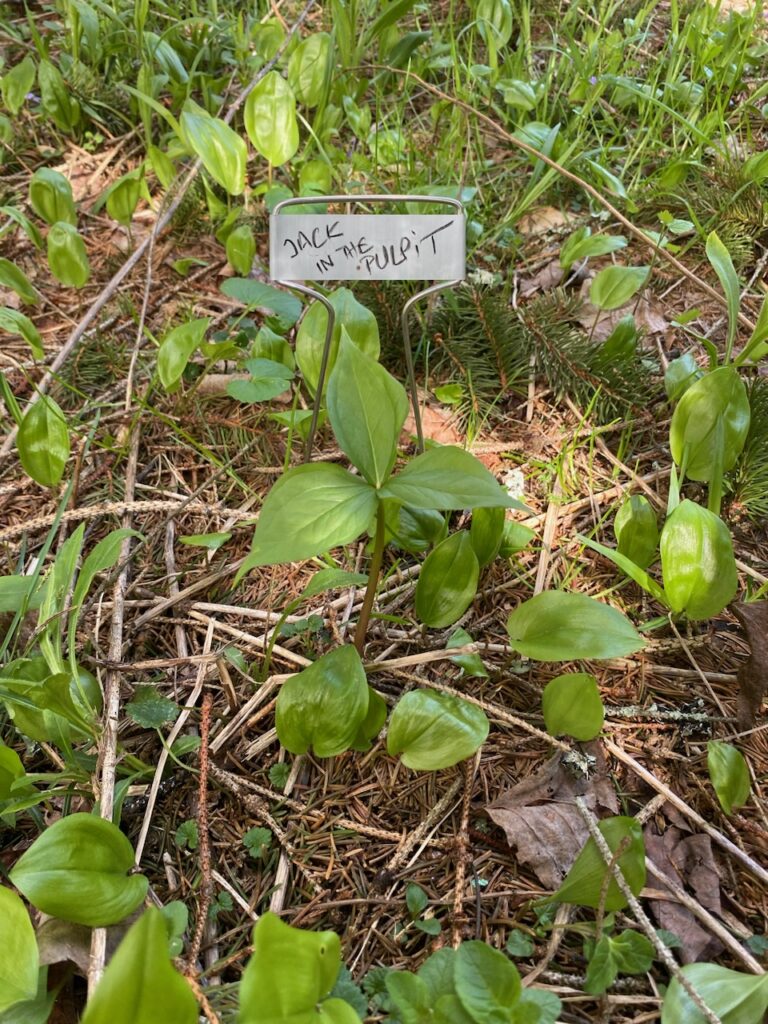
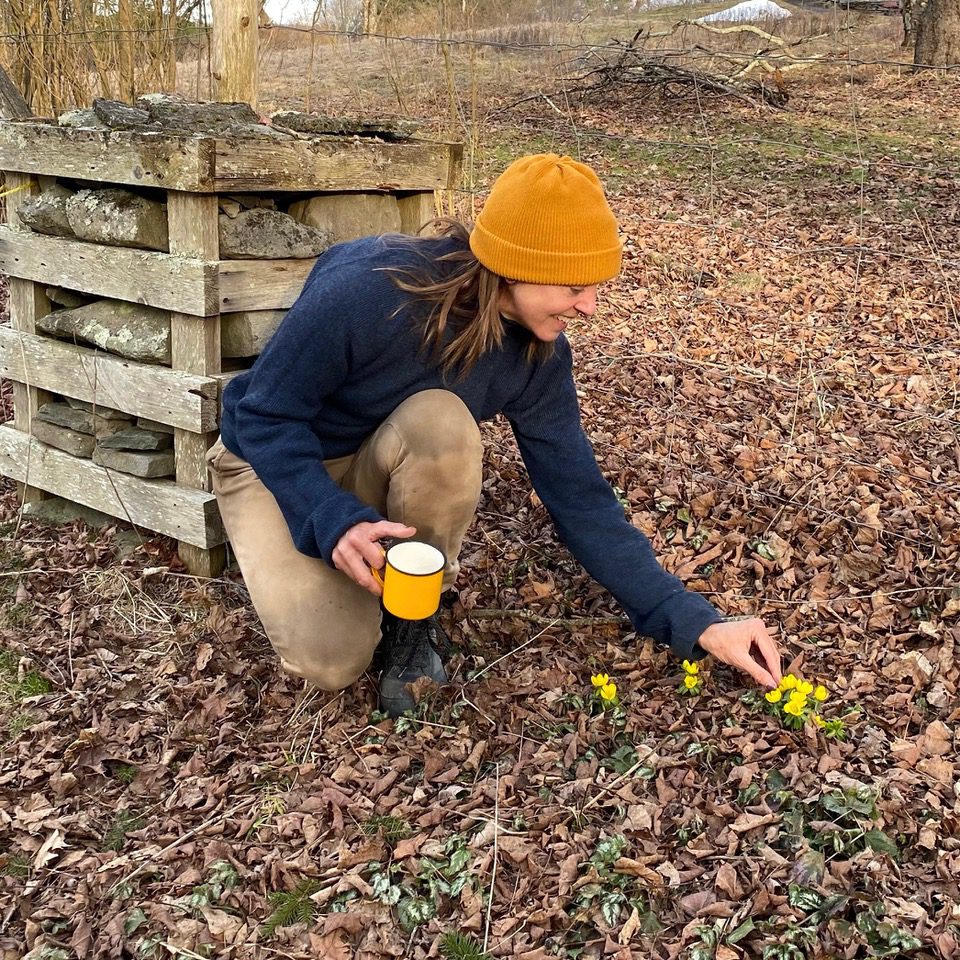
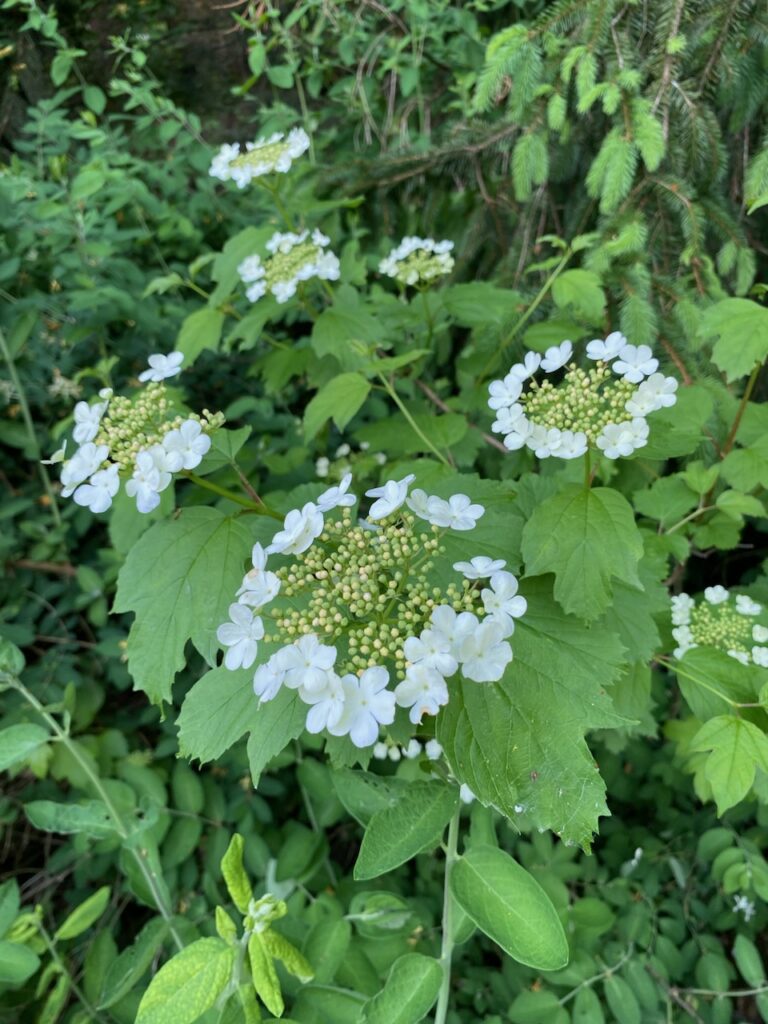
I confess that the first time I saw one of my native plants with its leaves completely eaten away, or rolled up with caterpillar silk into narrow cigars, I was taken aback. But that is the role these plants serve in my ecosystem. So now when the native moths and butterflies come each year, I know it’s because I’ve given them a home. And I hide the most delicious native shrubs in the background, where chewed foliage won’t be as obvious.
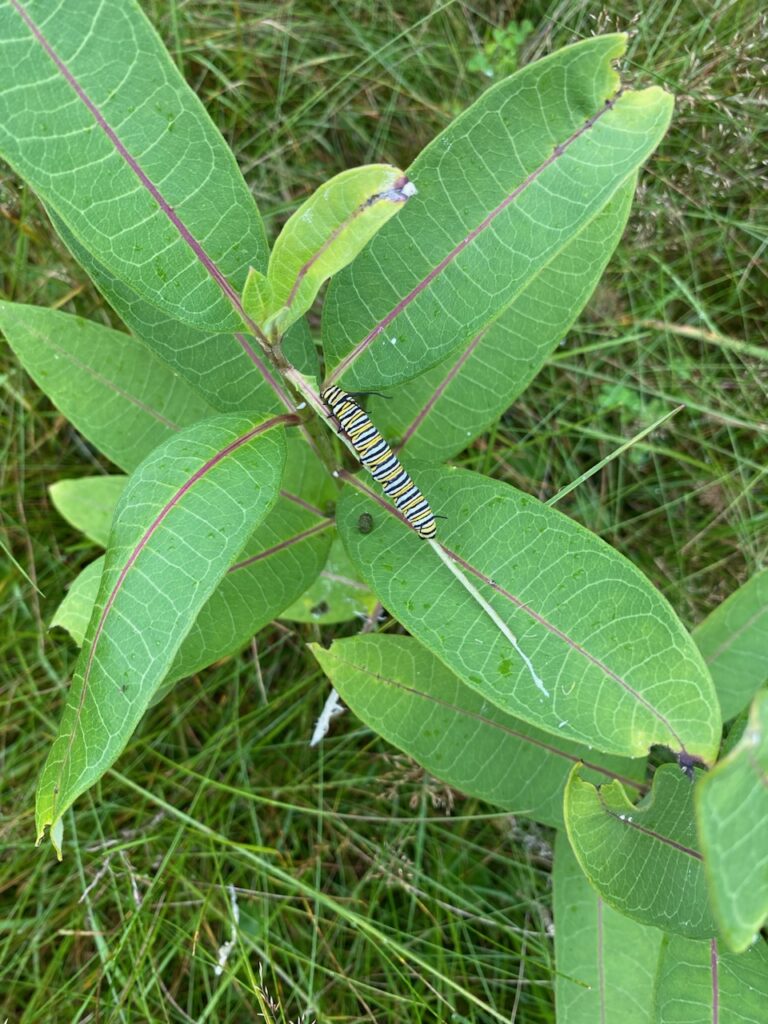
These native volunteers remind me of one of my favorite things about gardening — that it is not a solitary activity, even when I work alone. It is a collaboration with Nature. As hard as I might work, she does more than I do — and most of what I do is create the conditions for her to do her magic.
My Mum and her partner John – Hertfordshire, England
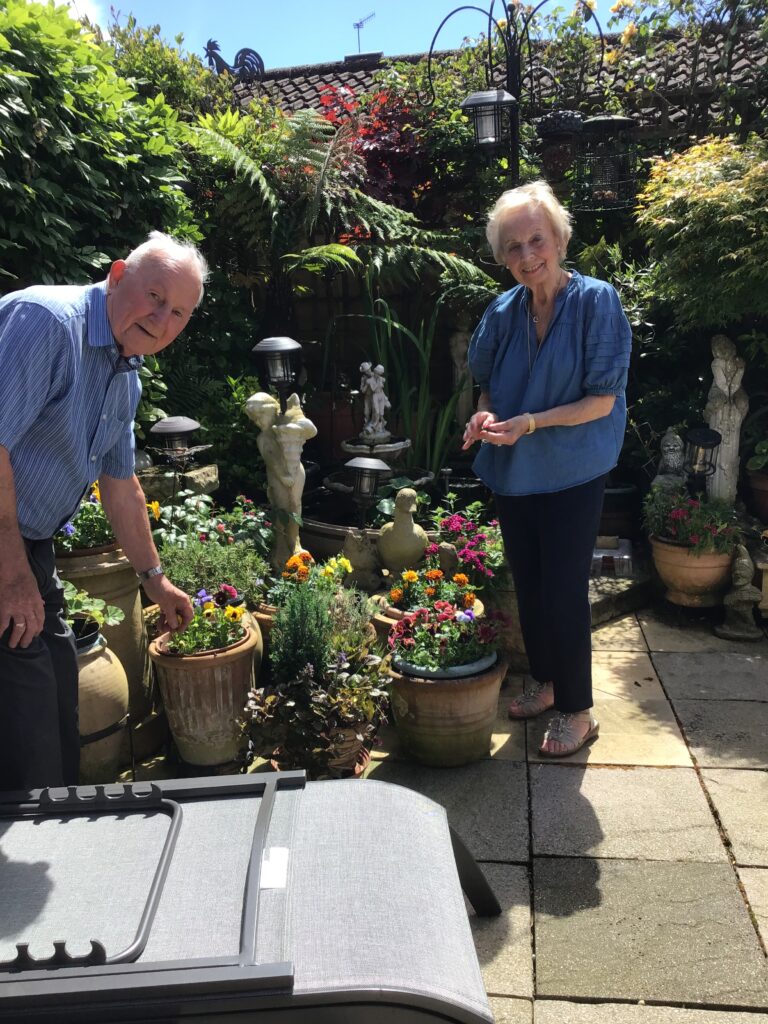
Hello, we would like to introduce ourselves, I am Joyce, Wendy’s mother and John is my partner. We are still gardening well into our eighties, and most importantly enjoying gardening.
We have both gardened for over 60 years, so we have experienced many changes in the way we grow and tender our plants. Once you have learned the basics of plants and soil, the most important part of gardening is to enjoy what you do.
We currently have a small garden, with a greenhouse, potting shed and paved terrace. Small trees screen the bottom of the garden which includes Acers, Ferns, Palms, Conifers, Roses and several Mediterranean plants including a Bougainvillea. Our area is south-facing, so the trees and roses give a certain amount of shade. We also have a pond and water feature, which encourages birds and wildlife. The left hand side has a fence with Wisteria and Jasmine, Honeysuckle and Clematis climbing along, which we control over the summer months. On the right hand side we have our lean to garage greenhouse, which we use as storage for tender trees and plants in the winter, and in summer we grow tomatoes and cucumbers. We also use it to pot up seeds and cuttings.
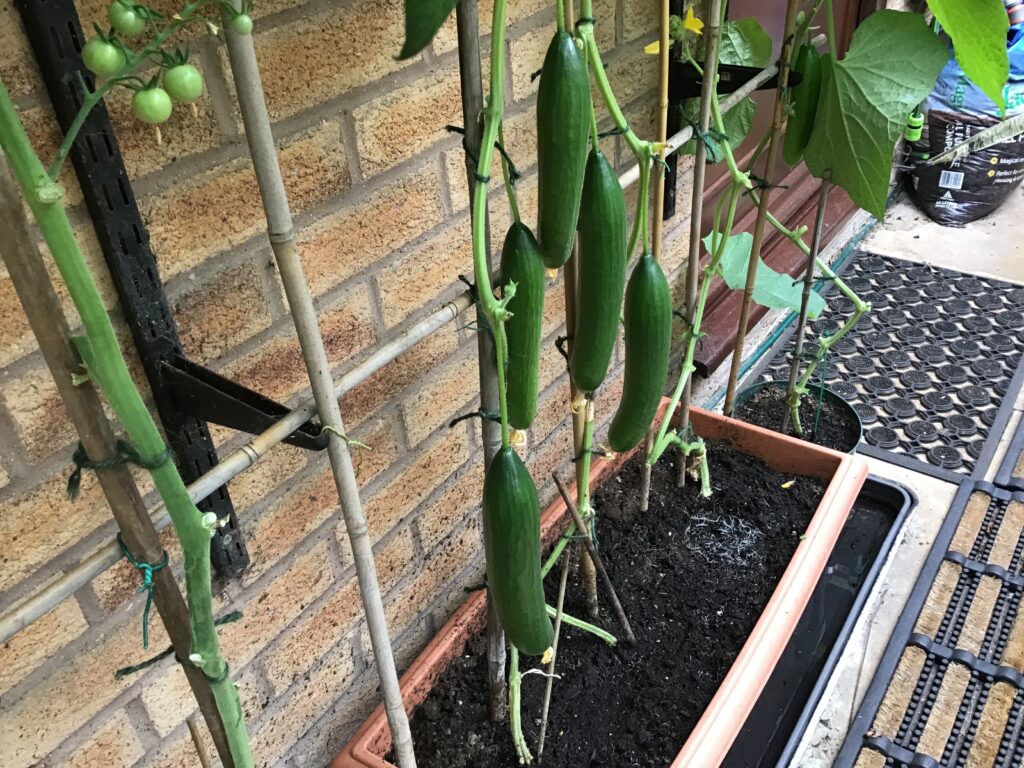
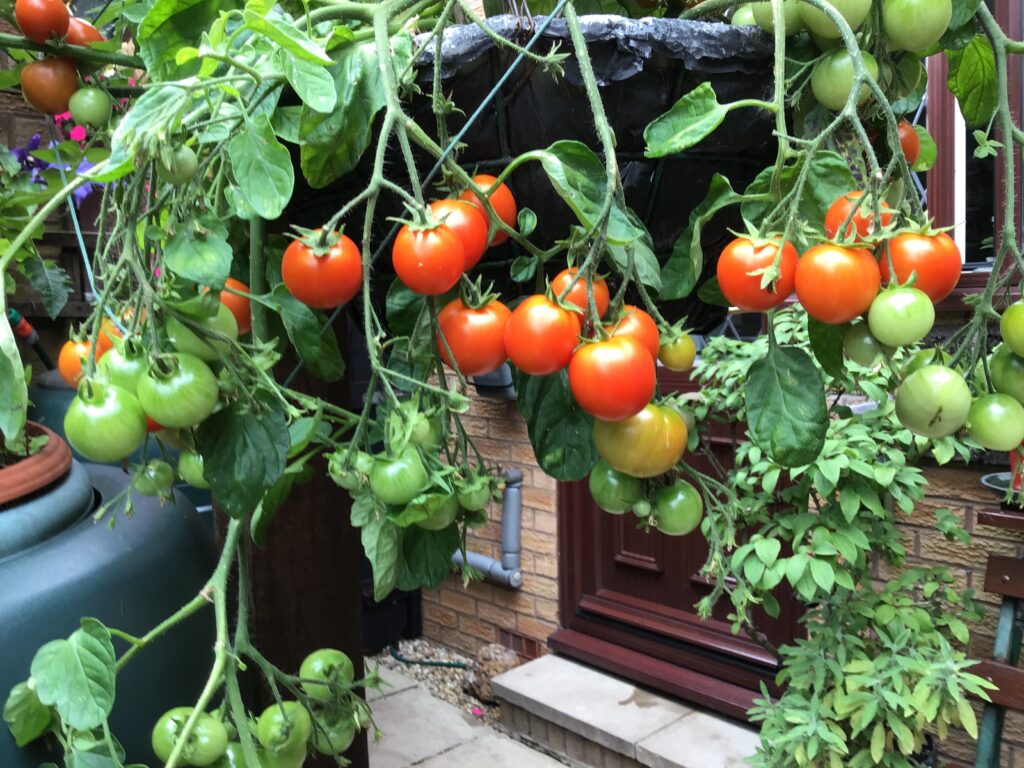
We love flowers. Most are grown in pots, and we use pots of different heights in clusters, which give a mix of beautiful colours. Having pots in a small area allows you to change seasons easily, from Spring daffodils to iris and late tulips. Pansies also give a fresh feel to spring arriving. As summer arrives, we use Roses, Michaelmas Daisy, Red Hot Poker, Canna, and, of course, Geranium. Hanging baskets also give extra color and are perfect in a small space.
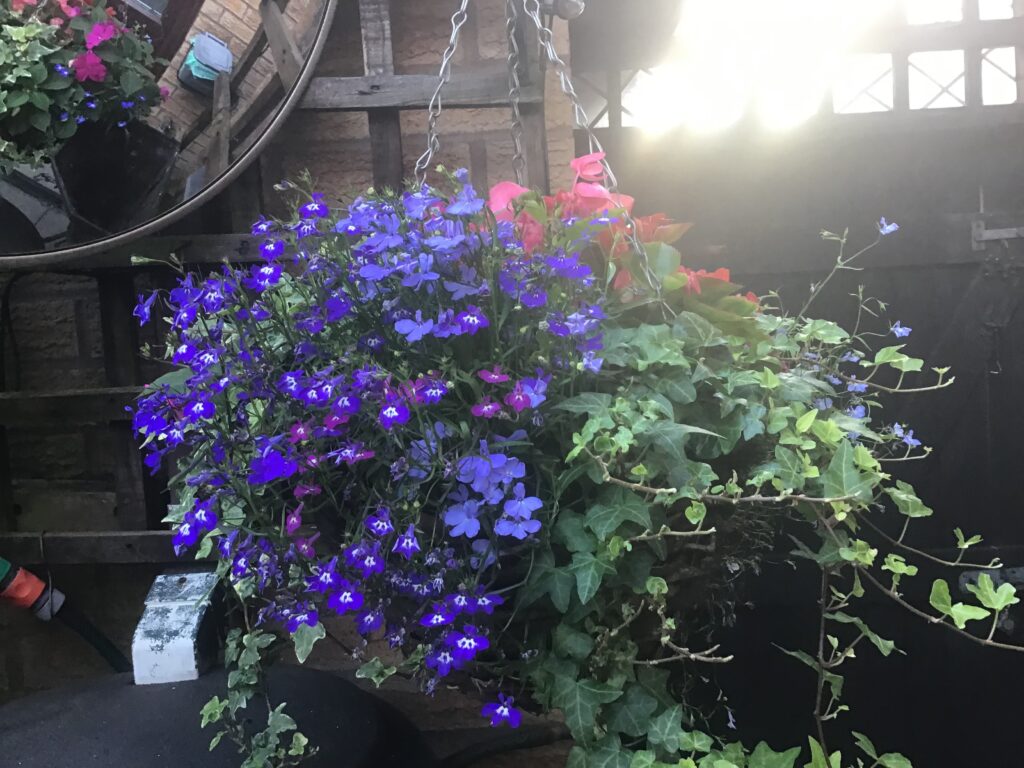
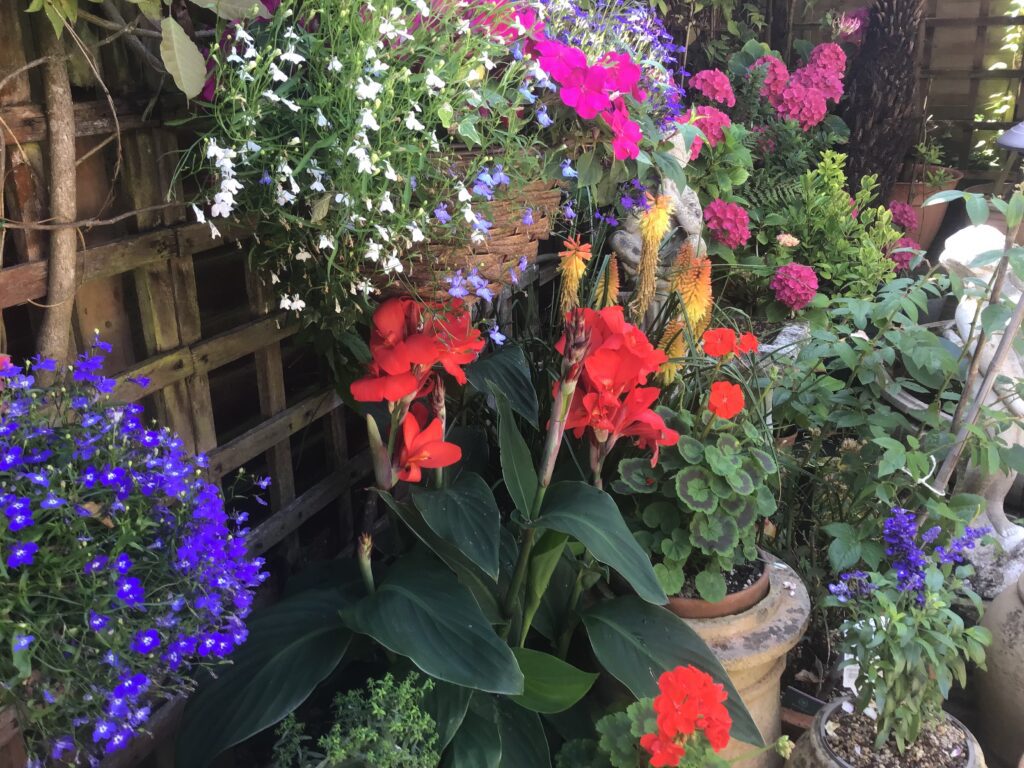
Jobs we have done this spring in the greenhouse, we have grown Tomatoes, Cucumbers, Runner Beans and Herbs from seed. We sow seeds first of all in plastic trays, and when 2 leaves on each plant appear we grow them on into 4″ pots. Once established we put them into position, outside in larger pots or inside the greenhouse. Runner Beans and sweet peas need canes like a wigwam, attaching each shoot with plastic rings; tomatoes and Cucumbers need also canes. These can be made by placing canes by the side of the plant and tying each plant to the cane.
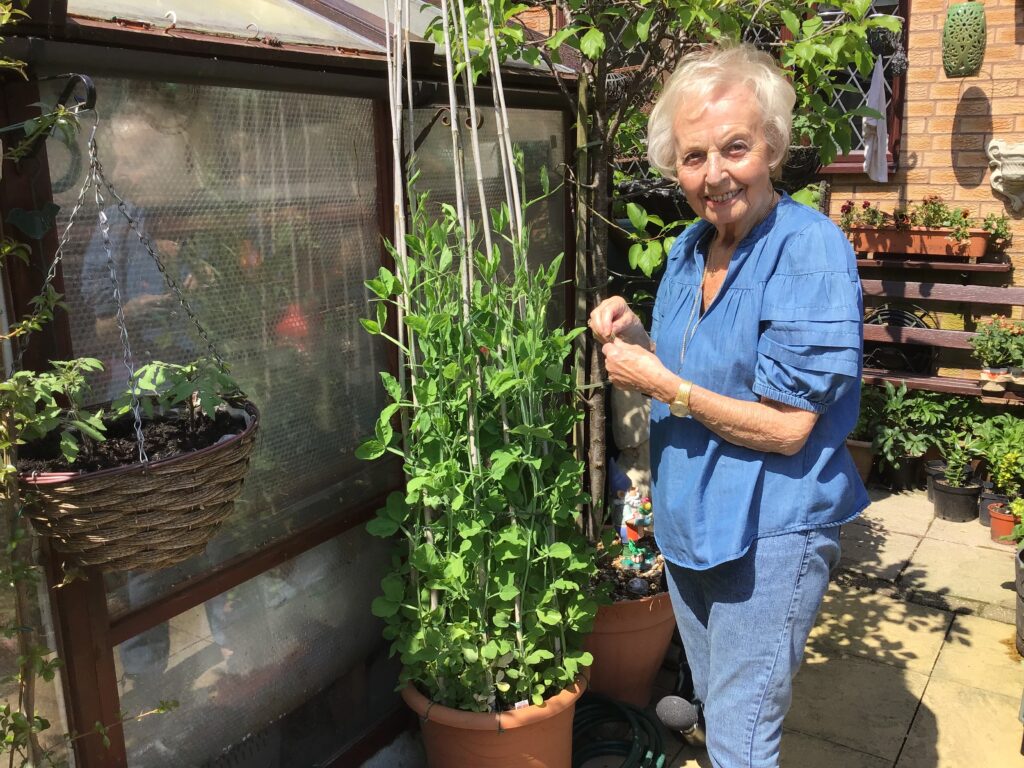
It has been lovely telling you of our garden in South East England, enjoy your summer and keep gardening.
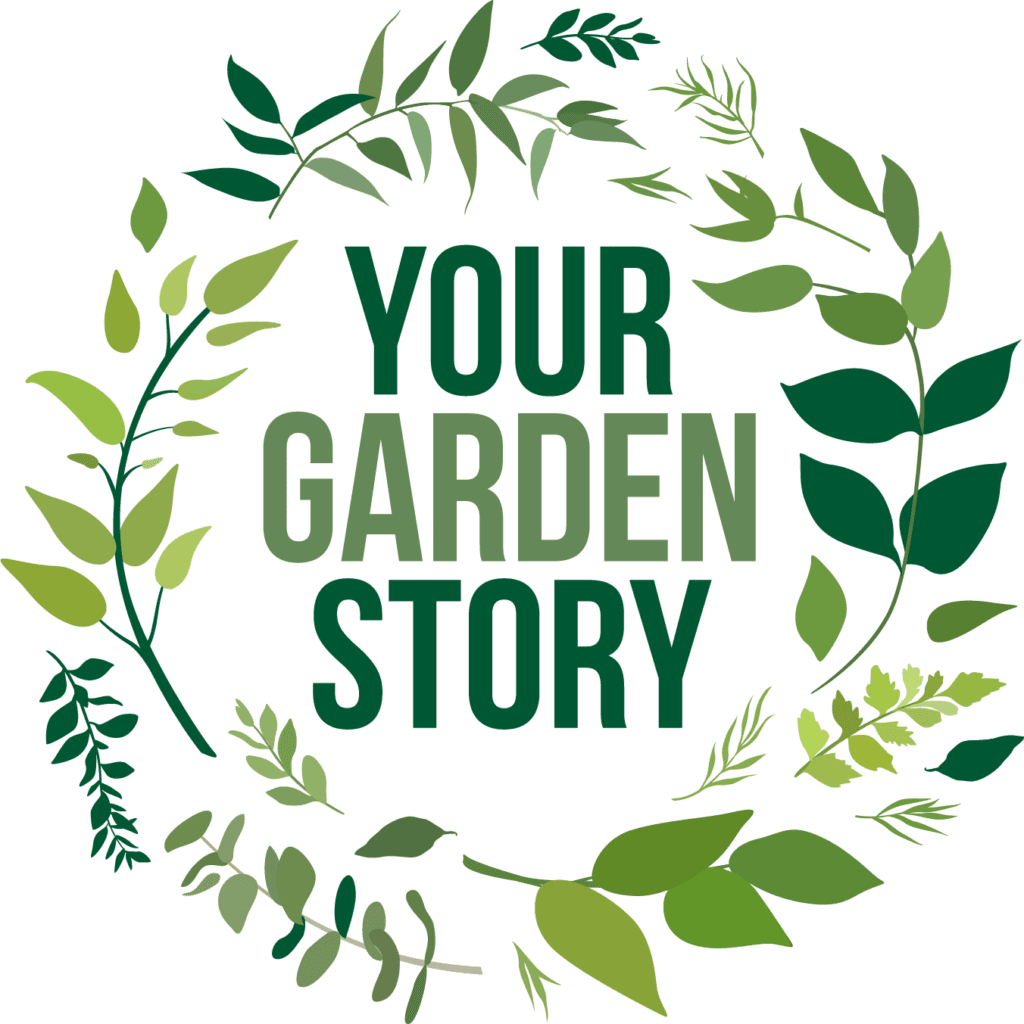
If you have stories about your garden, please send them to [email protected]. We can publish more here later in the year. We would love to hear from you.
Your Garden Story. Here to help us all become gardeners and make the world greener.
